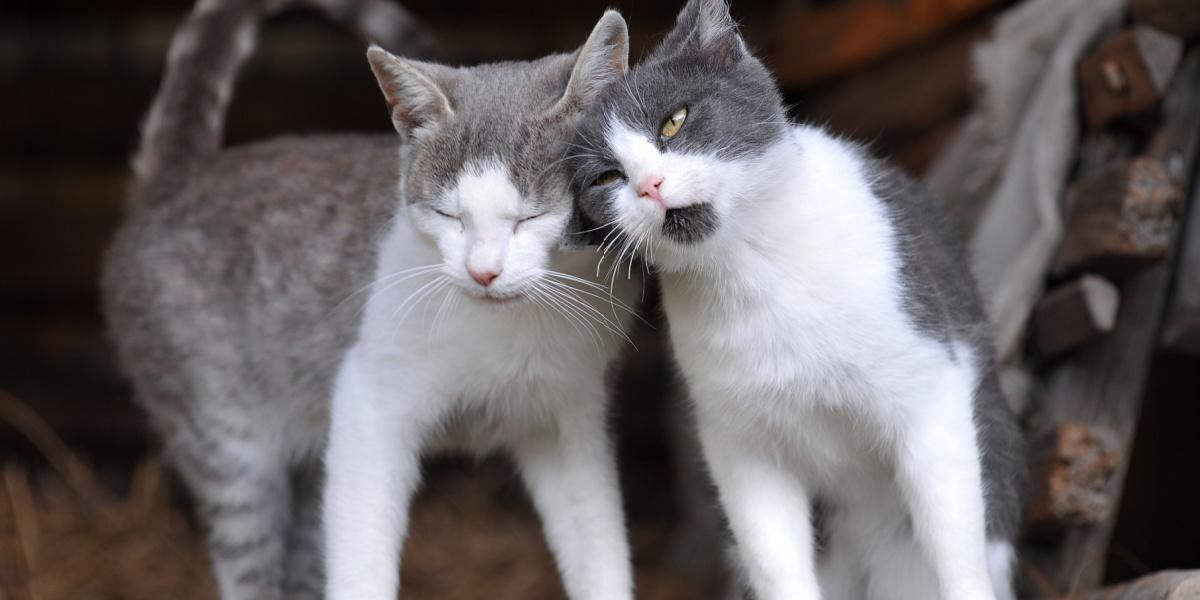
Male and female cats can have some differences in appearance and purr-sonality. yakub88 / Shutterstock.com
Girls or boys? Queens or toms? Some cat lovers prefer one over the other, believing certain personality traits are linked to biological sex. Maybe you’ve heard that male cats are more loving and female cats are more independent—or that male cats are more likely to pee around the house.
So what is truth and what is fiction? In this guide, we’ll cover the differences in appearance and personality between male and female cats.
Identification Male vs Female Cats & Biological Differences
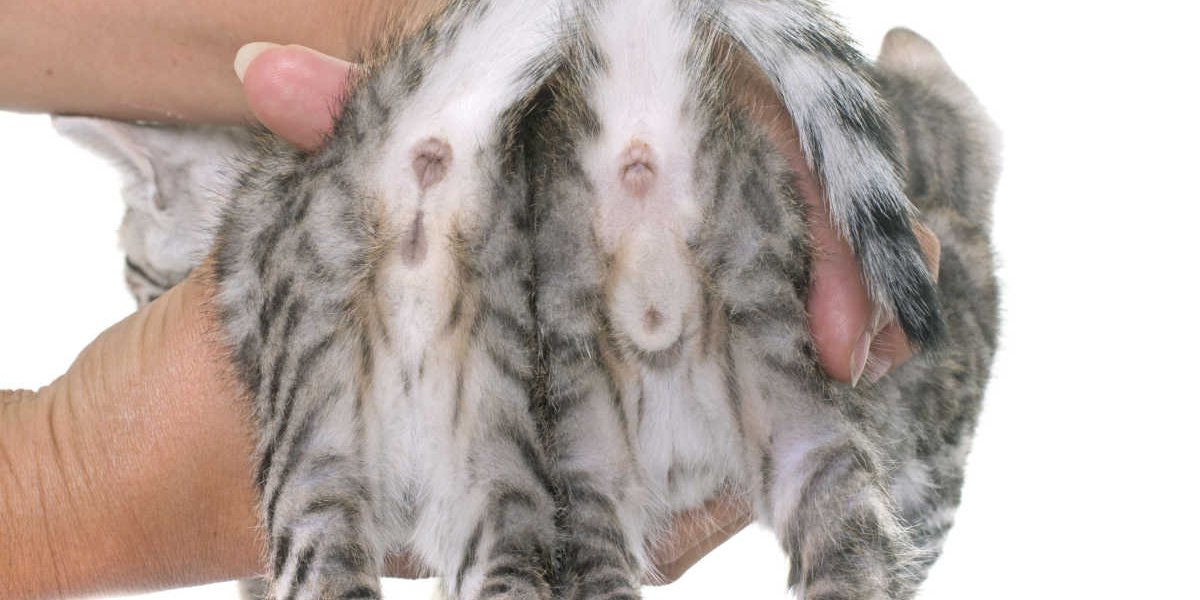
A female kitten’s vulva is a vertical slit close to the anus (left); a male’s penis is lower, with the testicles in between the penis and anus (right). Shutterstock.com
Physical differences between the two are present at birth, such as genitalia. It can be difficult to tell the biological sex of a kitten when they are first born but there are some telltale signs to look for.
Alison Gerken, DVM, a veterinarian with the San Francisco SPCA Behavior Service explains, “Male cats have a greater distance between the anus and the genitals (about 1 inch) compared to females, which have about one-half inch.”
The vulva looks like a vertical line right below the anus, sort of like an upside-down exclamation point (¡). In male kittens, there is more space between the anus and the genitals. This extra space is for the testicles to further develop. The penis looks like another small circle below the anus, so male genitals look a bit like a colon (:).
These differences remain through adulthood, but an adult male cat’s testicles are now much larger. However, if a male cat is neutered, it can be difficult to tell if he is a male or female. The key is to look at the shape and location of the opening beneath the anus.[1]
Some other physical differences between girl and boy cats include:
- Size: When compared to female cats, males are generally larger in size, especially if they reach maturity before neutering. This size difference is more pronounced in some breeds, such as the Maine Coon, Norwegian Forest Cat, and Ragdoll.
- Coat: Intact male cats might develop a longer, more lush coat than female cats. This is particularly noticeable in some breeds in which males have a thick ruff (mane) around the neck.
- Color: Some color patterns are sex-linked, so female cats come in some colors that male cats rarely do. The calico and tortoiseshell patterns are only seen in female cats. Calico is a patched tricolor pattern in orange, black, and white (or the dilute versions of these colors: cream, gray, and white). Tortoiseshell is a mottled pattern of swirled color in orange and black or the dilute cream and gray). Also due to chromosomal patterns, 80% of orange cats are male.
- Face and head: Male cats that have not been neutered often have bigger heads and thicker skulls than female cats. They also develop thicker whisker pads and have very large, pronounced cheeks called tomcat jowls.
- Life span: Female cats generally have longer life spans than male cats. Where females live an average of 15 years, unneutered male cats have an average life span of 13 years.[2] However, neutered male cats live 62% longer than intact males.[3]
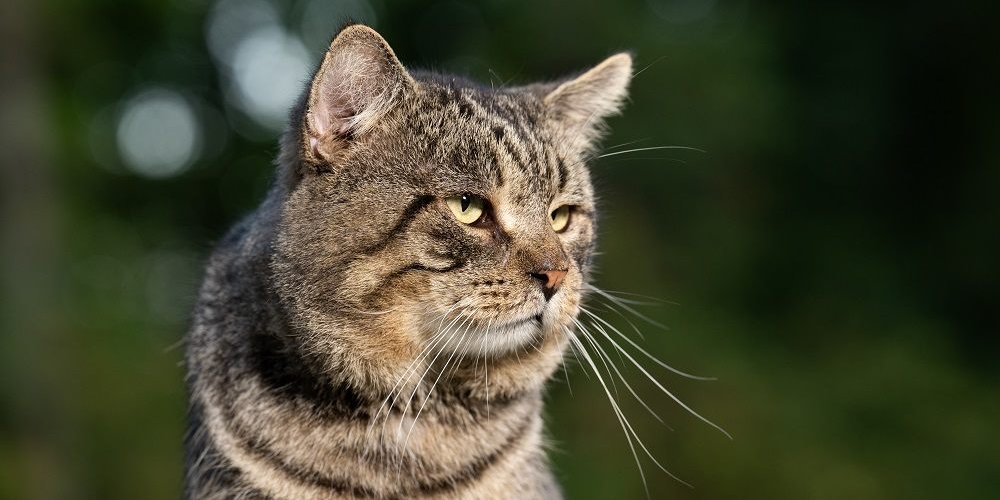
Intact male cats often develop pronounced cheeks called tomcat jowls. Tony Campbell / Shutterstock.com
Some physical differences between male and female cats are more noticeable when the cats are intact (not spayed or neutered). This is because spaying or neutering disrupts or changes some aspects of biological development, especially in the case of early spaying and neutering.
“Male cats who are neutered before reaching sexual maturity—around 5 to 7 months of age—do not develop hormone-related physical changes,” Dr. Gerken said. “These cats have smaller heads and less muscular bodies. They do not develop penile barbs and they have less-active tail scent glands—in other words, they aren’t as smelly!”
Differences In Temperament, Personality, and Behavior
Dr. Gerken points out that behavior and personality are influenced by many things, including genetics, environment, early life experiences, nutrition, and illness. Male and female cats have some general behavioral differences, but these might only be apparent in cats that are not spayed or neutered.
Some of the main differences between female cats and male cats include:
1. Tendency to Roam
Intact male cats are more likely to roam further outdoors because their hormones drive them to find a mate. Some intact male cats wander far distances and disappear for days before returning home. Spayed or not, female cats are much less likely to roam as far, although they may try to find a mate when they’re in heat (estrus). Neutering a male cat can significantly reduce roaming behavior.
2. Social Behavior
Friendly interactions between cats are known as affiliative behavior and are meant to develop or maintain bonds. Examples include cats grooming each other, rubbing against one another, or touching noses.
“Previous research demonstrated that while both males and females engage in affiliative behavior with other cats, female outdoor cats exhibited affiliative behavior more frequently than males,” Dr. Gerken said. “However, the research did not find the sex of the cat to be a factor that influences the frequency of affiliative behavior demonstrated between indoor cats.” In feral cat colonies, groups of females often live together, which may have influenced the frequency of these behaviors in these groups.[4]
3. Feline Aggression
Aggression is seen in both male and female cats for many reasons. However, Dr. Gerken points out that unneutered male cats might be more likely to exhibit aggression toward other males as they compete for territory or mating opportunities. In some cases, spaying or neutering the cat can decrease aggression.
4. Heat Cycle Behaviors
Female cats that are not spayed often display very specific behavioral changes during a heat cycle. Female cats in heat are likely to cuddle and be more affectionate, purr and vocalize excessively, seem restless, roll around on the floor, and groom excessively. Spaying female cats eliminates behaviors associated with going into heat.
5. Urine Spraying and Marking
You might be surprised to learn that intact cats of either sex can routinely urine spray. This normal cat behavior is a form of communication, marking territory, and attracting mates. Urine spraying can be reduced or eliminated by spaying or neutering the cat.
However, even some spayed and neutered cats engage in urine marking. Research has shown that about 10% of neutered male cats and 5% of spayed female cats continue to spray into adulthood, regardless of what age they were spayed or neutered.[5]
“This is likely because other motivations, aside from the territorial and sexual connotations, exist for urine spraying,” Dr. Gerken said. Cats might spray in response to stress, moving to a new home, changes in their routine, an inadequate litter box setup, or because of a physical disease.
Color-Linked Personality Traits
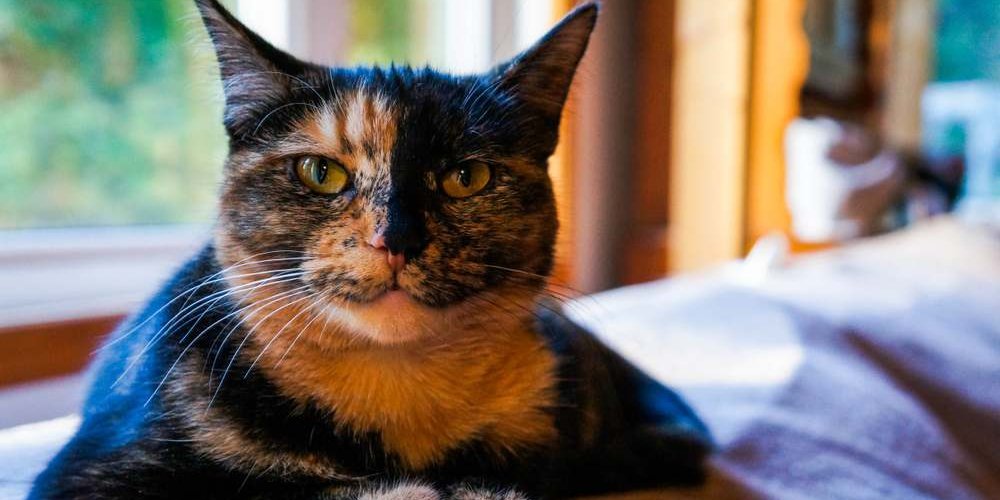
Some cat colorings have a reputation for having a certain personality, but every cat is unique. Shutterstock.com
Some people think tortoiseshell cats exhibit spicy and sassy attitudes, something that even has its own name: tortitude. Many cat lovers believe calico cats are just as feisty and that orange cats are the friendliest. But are these perceptions real or just a myth?
Research in this area is limited. One pet owner study found that calico and tortoiseshell cats were more likely to show behaviors like hissing, chasing, biting, swatting, or scratching when interacting with humans.[6]
However, Dr. Gerken recommends taking these findings with a grain of salt since they were based on the subjective opinions of the cats’ owners. “Preconceptions about color-linked personality traits may have caused the owners to notice and report these traits in their cats,” Dr. Gerken said. “Each cat is an individual with their own unique personality regardless of coat color.”
Male Cats vs Female Cats: Pros and Cons
Both male and female cats charm with their affectionate and playful personalities, often maintaining a kitten-like spirit. While generally easygoing, unneutered males may exhibit territorial behaviors, making understanding their unique traits crucial for optimal care. Let’s look at some of the pros and cons of each gender:
Male Cats Pros
- Affectionate: Male cats can be quite affectionate and enjoy cuddling with their owners.
- Playful: They often retain a playful and kitten-like demeanor throughout their lives.
- Easygoing: Male cats are generally more easygoing and adaptable to changes.
- Less Territorial: Neutered males tend to be less territorial and less likely to mark their territory with urine.
Male Cats Cons
- Spraying: Unneutered males are more likely to spray to mark their territory.
- Roaming Tendencies: Intact males may have a stronger desire to roam and explore.
Female Cats Pros
- Spayed females are less likely to mark their territory compared to male cats.
- Generally, female cats are less prone to aggressive behavior.
- They may be more adaptable to changes in their environment.
Female Cats Cons
- Unspayed females go into heat, which can lead to vocalization, restlessness, and a desire to escape outdoors.
- If not spayed, females can become pregnant, leading to the responsibility of caring for kittens.
- Some female cats may be more independent and less inclined to cuddle.
-
San Francisco SPCA. (2023, July 3). Behavior & Training - San Francisco SPCA.
-
O’Neill, D. G., Church, D., McGreevy, P. D., Thomson, P., & Brodbelt, D. (2014). Longevity and mortality of cats attending primary care veterinary practices in England. Journal of Feline Medicine and Surgery, 17(2), 125–133.
-
Banfield: Spaying, neutering correlate with longer lives. (2013, July 1). American Veterinary Medical Association.
-
Barry, K., & Crowell‐Davis, S. L. (1999). Gender differences in the social behavior of the neutered indoor-only domestic cat. Applied Animal Behaviour Science, 64(3), 193–211.
-
Mills, D. S., Redgate, S., & Landsberg, G. (2011). A Meta-Analysis of Studies of Treatments for feline urine spraying. PLOS ONE, 6(4), e18448.
-
The Aggie. (2016, January 21). UC Davis study finds calico, tortoiseshell cats to be most aggressive.


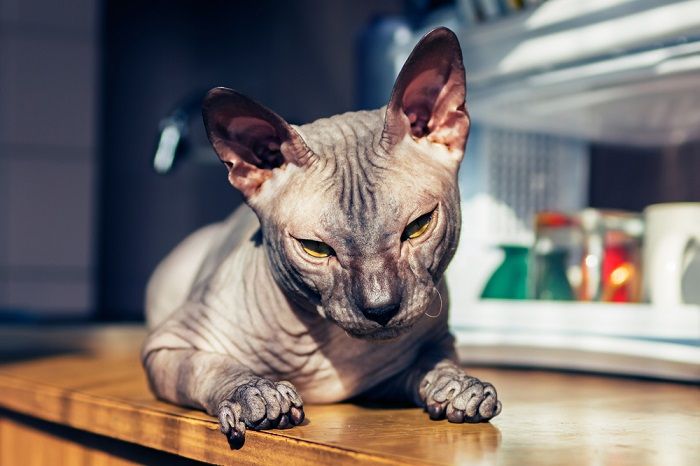



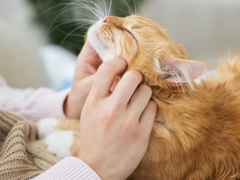

Has there been any studies regarding constipation in cats? I have a 10-year-old tortie who is quite small compared to other cats I’ve owned. She has always had tiny, hardball stools. I have tried oils, the paste for hairballs & pumpkin puree for cats, and nothing works but then I heard about polyethylene glycol 3350. I have been giving her 1/4 of a teaspoon dissolved in 1 tablespoon of water and then mixed into her wet food. I have cut out/back kibble feeding and occasionally 3-4 times a week give her about 12 oral-size kibble. I bought a water fountain which she would not use so I just let her have the tap water when she wants it as well as a fresh water bowl. She has been so happy on this diet and her bowel movements have been normal and look the way they should in tact in longish. Is there a problem with giving her this laxative after a length of time? I’ve been doing this for about 2 months now but don’t know if it is harmful over a length of time. To cart her to the vet causes her so much anxiety she gets sick and I’m afraid to take her unless it is a real emergency. Thanks and sorry for being so long winded.